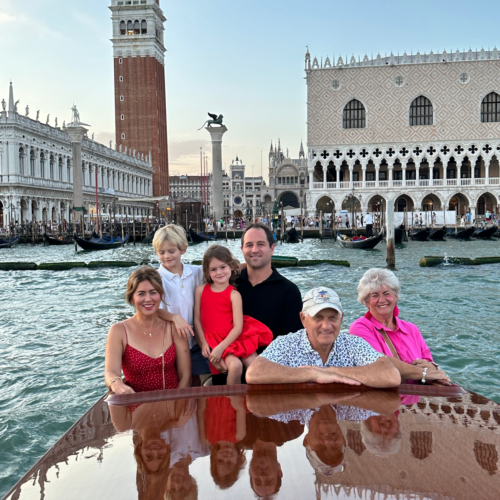Team Jilly and I took part in training sessions to learn more about human trafficking last year and I was shocked and appalled to learn some of the facts and hear some of the stories. What really resonated with me was how unprotected members of our communities are, especially the most vulnerable. Unfortunately, human trafficking takes place in each of our local communities and in an effort to bring this to an end it has to start with us taking notice of these issues and come together to be a part of the movement to create safer communities locally and around the world.
Today, I am so grateful to welcome Ally Global Foundation to the blog to share more information about what human trafficking is, along with some shocking statistics and ways we can all help to make a difference.
What is Human Trafficking?
It’s a complex issue, but in its simplest definition, human trafficking is a crime where one individual exploits another in order to make a profit. It takes on many forms. It can look like servitude in a private home; forced marriage, or sexual exploitation. No matter what the form, in every situation someone is being held against their will, taken advantage of and abused, and someone else is making money off of their pain and lack of freedom.
The United Nations Trafficking in Persons Protocol defines human trafficking as consisting of three elements: The Act (what is done), The Means (how it is done) and The Purpose (why it is done).

When a child is involved (someone under 18 years old), the “means” element is not required. The recruitment, transportation, transfer, harbouring or receipt of a child (The Act) for the purpose of exploitation is considered “trafficking in persons” even if it does not involve threat, use of force, or coercion.
Where does human trafficking take place?
Trafficking affects all regions and countries of the world—including Canada. It can occur within a country or may involve movement across borders. Increasingly, sexual exploitation is also taking place in the online space, through social media, gaming and messaging platforms.
Who might be vulnerable to trafficking?
While anyone may be susceptible to trafficking, members of vulnerable or marginalized groups are at the greatest risk. These include:
- Indigenous women and girls
- migrants and new immigrants
- LGBTQ+ persons
- persons living with disabilities
- children in the child welfare system
- at-risk youth
- those who are socially or economically disadvantaged
Who are traffickers?
Perpetrators of human trafficking span all racial, ethnic and gender demographics. Some use their privilege, wealth and power as a means of control, while others are subject to the same socio-economic disadvantages as their victims. Traffickers can be:
- business owners
- gang members
- powerful leaders
- intimate partners of the victim
- friends of the victim
- parents, guardians or relatives of the victim
What does human trafficking look like in Canada?
The 2018 Global Slavery Index estimates that on any given day there are 17,000 people living in modern slavery in Canada.
The true scope of human trafficking in Canada is underestimated because it is difficult to detect and underreported to police.
- Between 2009–2018, police services in Canada reported 1,708 incidents of human trafficking.
- Between 2019–2020, the Canadian Human Trafficking Hotline identified 593 victims/survivors of human trafficking, based on 415 cases reported to them.
However, these figures don’t consider the unknown number of cases that go unreported. Victims of human trafficking may be:
- unaware they are being trafficked
- in vulnerable situations
- distrustful or afraid of authorities
- afraid of being deported or losing employment
- facing threats from their trafficker
All of these factors contribute to the underreporting of human trafficking incidents to police.
How does trafficking happen in Canada?
Traffickers can approach potential victims in a variety of ways, such as posing as a romantic interest or friend, contacting them through social media or by posting newspaper or Internet ads for job opportunities.
“Grooming” is the term commonly used to describe the process traffickers use to acquire their victims, and typically involves the following stages:
- Targeting the Victim: Offenders most often prey on those who are vulnerable, isolated and have low self confidence
- Gaining Trust / Creating a Bond: Gathering information about the victim and making them feel safe; possibly gaining the trust of the victim’s family or friends
- Fulfilling a Need: Promising a “loving” relationship, gifts, drugs or other things the victim may find desirable
- Isolating the Victim: Creating separation between the victim and their family and friends by pitting them against them
- Abuse
Maintaining Control: Use of threats, coercion and/or violence to keep the victim from feeling like they can leave their trafficker; often a trauma bond is formed.

Trafficking in Canada by the numbers
Based on the most recent data available from reports made to the police and the Canadian Human Trafficking Hotline:
- 90%–97% of victims were female (varies based on different reports)
- 73% of victims were under the age of 25
- 92% of victims knew their trafficker (8% were trafficked by a stranger)
- 31% friend or acquaintance
- 29% current or former boyfriend, girlfriend, spouse or intimate partner
- 29% criminal or business relationship
- 71% of reports were identified as sex trafficking, and 7% were identified as labour trafficking
Marginalized groups are disproportionately overrepresented as trafficking victims relative to their share of Canada’s overall population:
- 50% of reported victims were Indigenous women and girls (yet this demographic makes up just 4.9% of Canada’s population)
- 2% of reported victims were transgender or gender nonconforming individuals (yet this demographic makes up just 0.24% of Canada’s population)
- 51% of reported victims were or had been in the child welfare system

So how can you make a difference?
Human trafficking is an overwhelming issue, but we can make a big difference together when we all take small action steps. Below are a few ways you can help prevent human trafficking and provide support to survivors.
Know the signs and report
Family and friends play a crucial role in preventing trafficking and supporting victims/survivors. Become familiar with the signs of trafficking and stay alert to potential trafficking scenarios. (It should be noted that you should never attempt to confront a suspected trafficker directly or alert a victim to your suspicions, as it could potentially put the victim in greater danger.)
To report human trafficking:
- In Canada, call the Canadian Human Trafficking Hotline at 1-833-900-1010
- In the United States, call the National Human Trafficking Hotline at 1-888-373-7888
- If you or someone you know is in immediate danger, call 9-1-1.
Watch the twelve thousand film
The Twelve Thousand is a short film based on the true story of one survivor, and it is a powerful tool for raising awareness about human trafficking. Invite your friends and family to watch the film with you and start meaningful discussions.Become a mentor to a young person
Traffickers often target people who are emotionally vulnerable, going through a tough time or don’t have a strong support system around them. As a mentor, you can have a positive impact on someone’s life during their formative years. Consider volunteering with a community-based mentorship program like Big Brothers, Big Sisters.
Donate
Give to charities like Ally Global Foundation that focus on human trafficking prevention programs and long-term aftercare programs for survivors.
Consider becoming a monthly donor through The Refuge. Many of us subscribe to monthly services—whether it’s music or movies, the gym or a wine club—why not be intentional with your generosity in the same way? The average length of recovery for trafficking survivors is about 10 years. This kind of long-term care is ongoing, so it requires ongoing support. Your monthly support can help prevent human trafficking and provide survivors with long-term care, so that they can build healthy, independent futures.

Thank you for taking the time to read about human trafficking and the ways that we can help prevent it from happening in our communities! If you’d like to learn more about our work, please visit our website or follow us @allyglobal on Instagram.
— Ally Global Foundation





Thank you so much for sharing this with your audience, Jillian.
Excellent information! Thanks for sharing and helping others see how prevalent this issue is and how we can be a part of the solution.